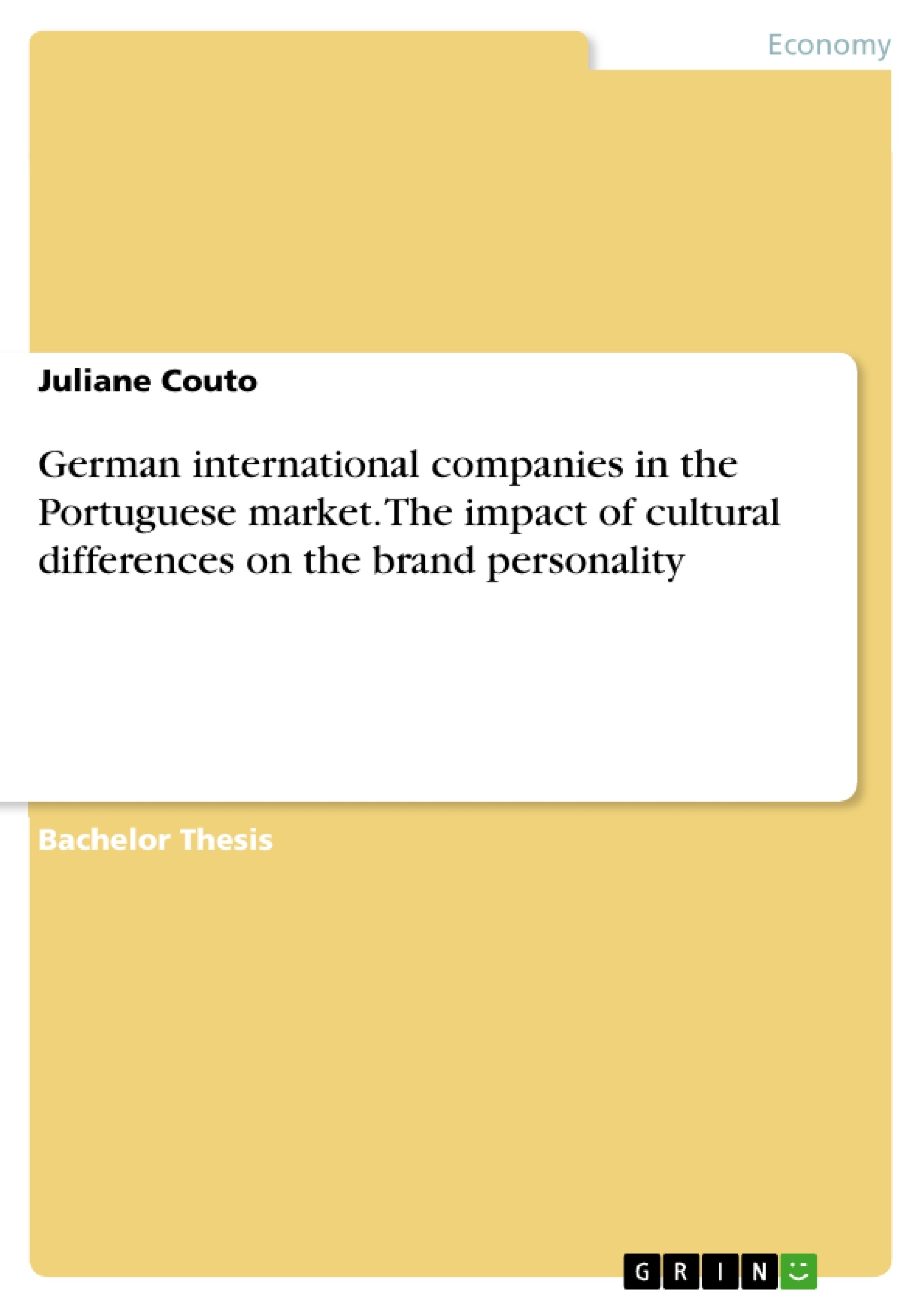This study examines how cultural differences between Germany and Portugal affect the brand personality of German international companies.
„True cultural connection is the Holy Grail for brands if they want to create an
enduring emotional relationship with people.“
The analysis of this thesis goes hand in hand with this quote by Adam Chmielowski,
Group Head at Flamingo. In order to find out if his statement concerning the importance of brand awareness in branding is true, a suitable research question will be introduced. The goal is to find out whether international companies are already aware of this fact and what consequences it has on the brand personality if a company tries to enter a new market in another country but expulses the cultural aspects.
A recognizable brand name can lead to an increase in sales, and could therefore be one of the most valuable assets of a company. Especially for companies who offer products or services which can easily be copied by others or where several substitutes are available in the market. An example for such an industry is the automotive industry, because they differentiate themselves through their brand personality.
The significant value of a brand name and personality is not only important due to high competition, but also because of the increase in emotional wants and needs of the customer, which need to be met in order to make profit. Potential customers might be more likely to buy a product from a known brand, that they might have positive associations or feelings with than from an unknown. Hence, it is important to attach a consumer to stay with the company and become a loyal customer for this brand, because unlike product attributes, the ideas of the consumer of this brand do not easily change. The setting up of a brand image is a marketing step and investment for beneficial in the long-term. In this context the term brand personality stands for profile of a brand with human characteristics.
Inhaltsverzeichnis (Table of Contents)
- 1. Introduction
- 2. Theoretical construct of a brand personality
- 2.1 Definition
- 2.2 Models of brand personality
- 2.3 Importance of brand personality for the strategic brand management
- 2.4.1 Scope for design
- 2.4 Structure of the brand personality scale by J. Aaker
- 2.4.2 Measurement of the brand personality
- 3. Brand personality and the connection to consumer personality
- 3.1 Function of brand personality
- 3.2 Congruity theory
- 4. About Portugal
- 4.1 Economic development and structure
- 4.2 Foreign economics
- 4.3 Relation Portugal-Germany
- 5. About culture
- 5.1 Definition
- 5.2 Hostede's cultural dimensions
- 5.3 The five cultural dimensions on the example of Germany and Portugal
- 5.4 Critical acclaim to Hofstede's theory
- 6. Combination of brand personality, consumer personality and culture
- 7. Empirical Research on the example of HARIBO and Volkswagen
- 7.1. Goals of the Research
- 7.1.1 Research design
- 7.2 Results of the empirical research
- 7.2.1 Descriptive Basisevaluation
- 7.2.2 Cognition of the brand personality
- 7.3 Summary of the findings
- 7.1. Goals of the Research
- 8. Conclusion
Zielsetzung und Themenschwerpunkte (Objectives and Key Themes)
This bachelor's thesis investigates the impact of cultural differences on the brand personality of German international companies in the Portuguese market. The study aims to analyze how cultural factors influence the perception and understanding of brand personality by Portuguese consumers.
- Brand personality and its connection to consumer personality.
- Cultural dimensions and their influence on brand perception.
- Empirical research on the example of HARIBO and Volkswagen.
- Analysis of the impact of cultural differences on brand personality.
- Implications for brand management strategies in international markets.
Zusammenfassung der Kapitel (Chapter Summaries)
The thesis begins with an introduction to the theoretical construct of brand personality, defining it and exploring various models, including Aaker's brand personality scale. It examines the importance of brand personality for strategic brand management and analyzes the connection between brand and consumer personality through the lens of congruity theory.
The study then focuses on Portugal, exploring its economic development, foreign economics, and its relationship with Germany. It delves into the concept of culture, defining it and examining Hofstede's cultural dimensions, particularly as applied to Germany and Portugal. The thesis discusses critical acclaim to Hofstede's theory, highlighting its strengths and limitations.
The work combines brand personality, consumer personality, and culture, analyzing their interrelationships. It then presents an empirical research study on HARIBO and Volkswagen, exploring the goals and design of the research and analyzing the results. The study examines both descriptive evaluations and the cognition of brand personality, concluding with a summary of the findings.
Schlüsselwörter (Keywords)
Brand personality, consumer personality, cultural dimensions, Hofstede, Germany, Portugal, HARIBO, Volkswagen, international marketing, brand management, empirical research, cross-cultural marketing.
- Arbeit zitieren
- Juliane Couto (Autor:in), 2014, German international companies in the Portuguese market. The impact of cultural differences on the brand personality, München, GRIN Verlag, https://www.grin.com/document/376079



